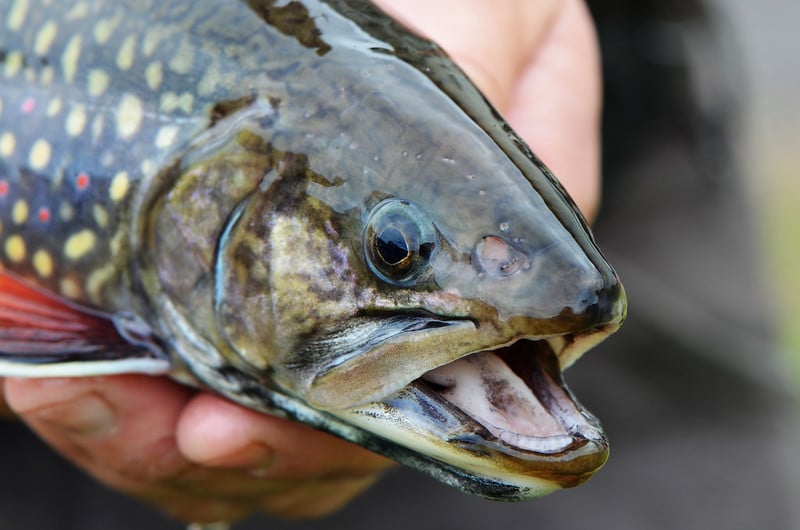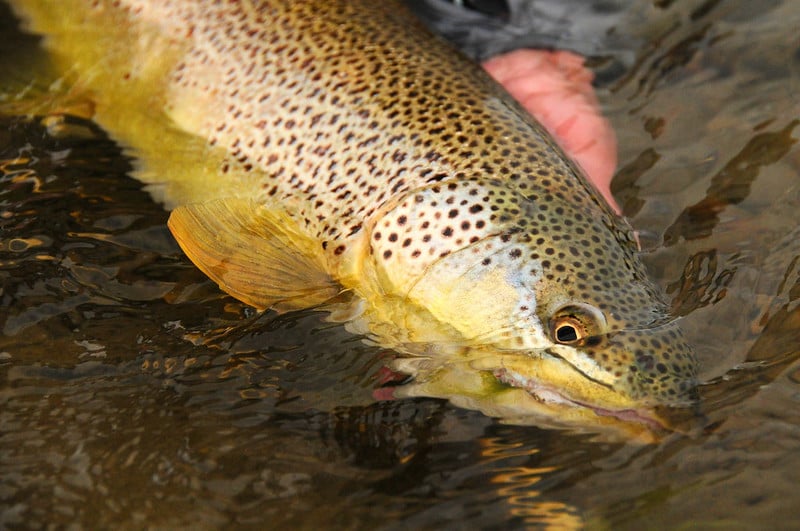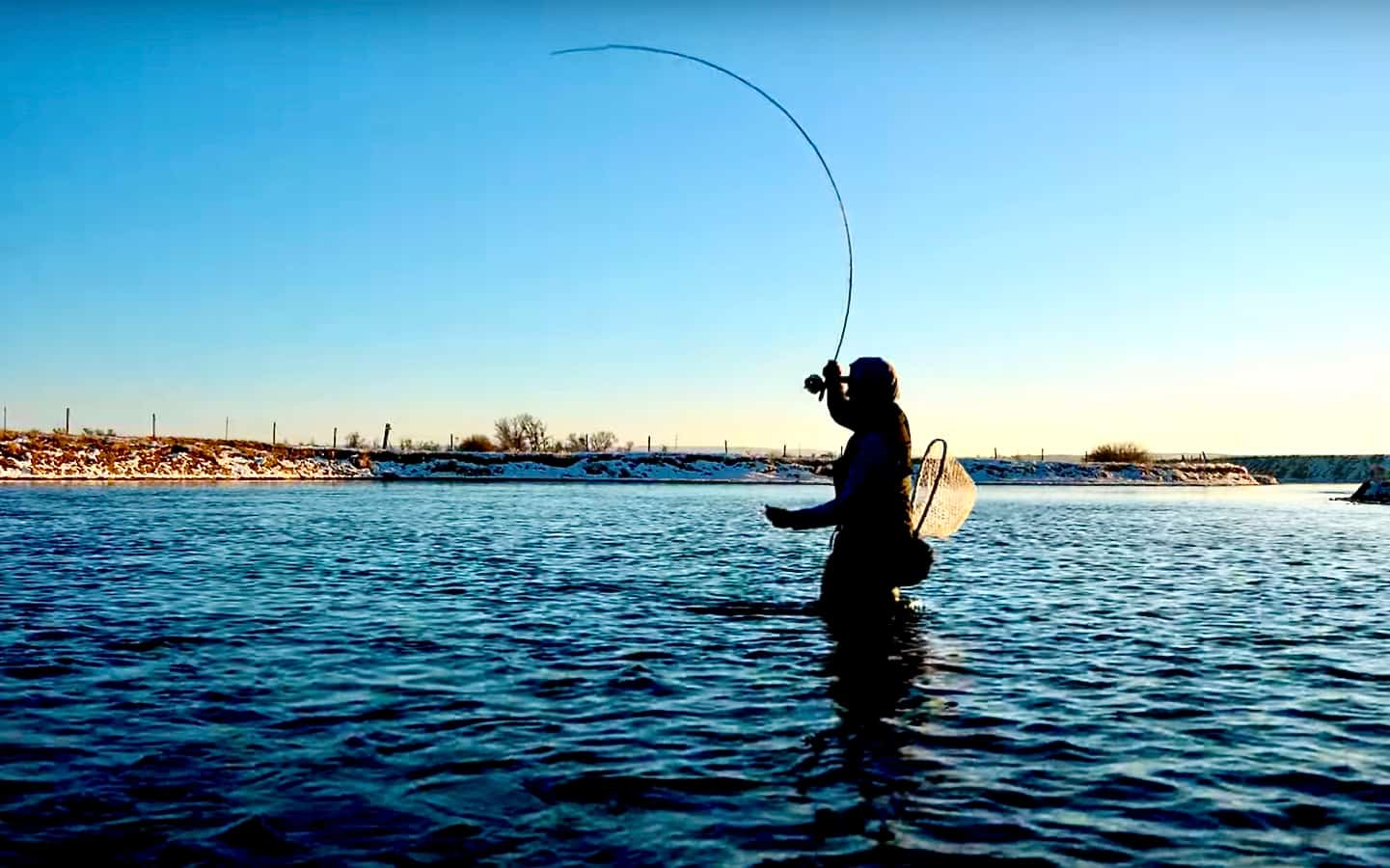Ask MidCurrent: Tap Into Your Sensitive Side

Image by David Lambroughton
Question: What does it mean when someone says a fly rod is sensitive or has a sensitive tip? Why is this important?
Answer: At its core, a sensitive fly rod is one that excels at transmitting the subtle vibrations and movements from the water through the rod and into the angler’s hands. This seemingly simple characteristic is, in fact, a complex interplay of design, materials, and craftsmanship that can make all the difference between a successful day on the water and a frustrating series of missed opportunities.
When an experienced angler casts a line with a sensitive rod, they’re not just throwing a fly into the water; they’re extending their senses into the aquatic environment. Every twitch, every nibble, and every change in current is telegraphed back to them through the rod. This heightened awareness allows for a level of precision and responsiveness that can be the deciding factor in hooking up with a fish or presenting a fly with pinpoint accuracy.
Key Factors Influencing Rod Sensitivity
Material Composition
The sensitivity of a fly rod is influenced by several key factors, with material composition playing a starring role. Most high-end sensitive rods are crafted from high-modulus graphite, a material prized for its stiffness and light weight. This combination allows for quick recovery after a cast and superior transmission of vibrations. The stiffness of graphite means that even the slightest disturbance at the tip of the rod can be felt all the way down to the handle. In contrast, materials like fiberglass, while having their own set of advantages, generally don’t offer the same level of sensitivity as their graphite counterparts.
Design and Construction
Material alone doesn’t tell the whole story. The design and construction of the rod are equally important in achieving that coveted sensitive feel. Weight distribution plays a role; a well-balanced rod with weight evenly distributed along its length, rather than concentrated at the tip, enhances overall sensitivity. Lighter guides and other components contribute to this balance, creating a more responsive feel throughout the entire rod.
Tip Flexibility and Rod Action
The tip of the rod deserves special attention when discussing sensitivity. A rod with a softer tip can provide excellent feedback on light bites, as it flexes more easily under the slightest pressure. This flexibility allows anglers to detect even the most tentative nibbles from cautious fish. On the flip side, a stiffer tip offers its own advantages, particularly in terms of line control during casting and the ability to set the hook quickly when a fish strikes.
The action of the rod—how much it bends when pressure is applied—is another factor in determining sensitivity. Fast-action rods, which bend primarily at the tip, are often praised for their quick responsiveness to bites. They allow for rapid detection of strikes and can be particularly effective when fishing with light lures or in situations where fish aren’t aggressively taking the bait. Slower action rods, which bend deeper into the blank, may sacrifice some of that immediate sensitivity but can offer other advantages in casting and presentation, especially when delicate touch is required.
The Practical Importance of Rod Sensitivity
Enhanced Bite Detection
A sensitive rod enables an angler to feel even the subtlest takes, which is particularly important when using small flies or fishing in conditions where fish are finicky. This ability to detect light bites can be the difference between a successful hookset and a fish that gets away before the angler even realizes it was there.
Reading the Underwater Environment
But sensitivity isn’t just about feeling bites; it’s also about understanding the underwater environment. A sensitive rod allows anglers to feel the composition of the river or lake bottom, detecting changes from gravel to sand or the presence of submerged vegetation. This information is invaluable for reading the water and identifying likely holding spots for fish. It also helps in avoiding snags and presenting flies in the most effective manner possible.
Improved Casting Precision
Casting precision is another area where rod sensitivity shines. During the casting process, a sensitive rod provides feedback on how the line is loading, allowing for minute adjustments in timing and power. This translates to more accurate casts, which is essential when trying to present a fly in just the right spot to entice a fish. The ability to feel how the line and fly are behaving during the cast leads to better control over presentations, allowing anglers to adapt to changing wind conditions or tricky currents.
Sensitivity in Specific Fishing Techniques
The importance of sensitivity becomes even more apparent when considering specific fishing techniques. In nymphing, for example, detecting subtle takes is the name of the game. A sensitive rod allows the angler to feel when the fly touches the bottom or when a fish takes the fly, even if there’s no visible indication on the surface. Similarly, when dry fly fishing, a sensitive rod can help detect the moment a fish takes the fly even if you don’t see it.
For those targeting larger species like salmon or steelhead, rod sensitivity plays a different but equally important role. When drift fishing for these powerful fish, being able to detect when a weight ticks the bottom or when a fish softly mouths the fly can be the key to a successful hookup. The sensitivity of the rod in these situations allows anglers to maintain contact with their gear and respond quickly to any changes.
Finding the Right Balance
It’s worth noting that while sensitivity is generally considered a positive attribute, there can be such a thing as too much of a good thing. Extremely sensitive rods can sometimes transmit too much information, making it difficult for less experienced anglers to distinguish between meaningful signals and background noise. This is why many anglers develop preferences for certain levels of sensitivity based on their fishing style, target species, and personal feel.
The Heart of the Fishing Experience
The importance of sensitivity in a fly rod comes down to the enhanced connection it provides between the angler and the aquatic environment. It’s about feeling every subtlety of the fishing experience, from the way a fly drifts in the current to the moment a fish decides to strike. This heightened awareness not only improves an angler’s chances of success but also deepens their understanding and appreciation of the water and the fish they pursue.
For those looking to improve their fly fishing game, paying attention to rod sensitivity is the kind of nuanced knowledge that can help you make more informed choices about gear and technique. It’s not just about catching more fish—although that’s certainly a welcome benefit—it’s about developing a more intimate and rewarding relationship with fly fishing.
The Future of Rod Sensitivity
As fly rod technology continues to evolve, sensitivity remains a key focus for manufacturers and anglers alike. The quest for the perfect balance of sensitivity, strength, and casting performance drives innovation in the industry, resulting in rods that push the boundaries of what’s possible on the water. For the dedicated fly angler, this ongoing evolution means new opportunities to refine their craft and experience the thrill of fly fishing in ever more intimate and exciting ways.










